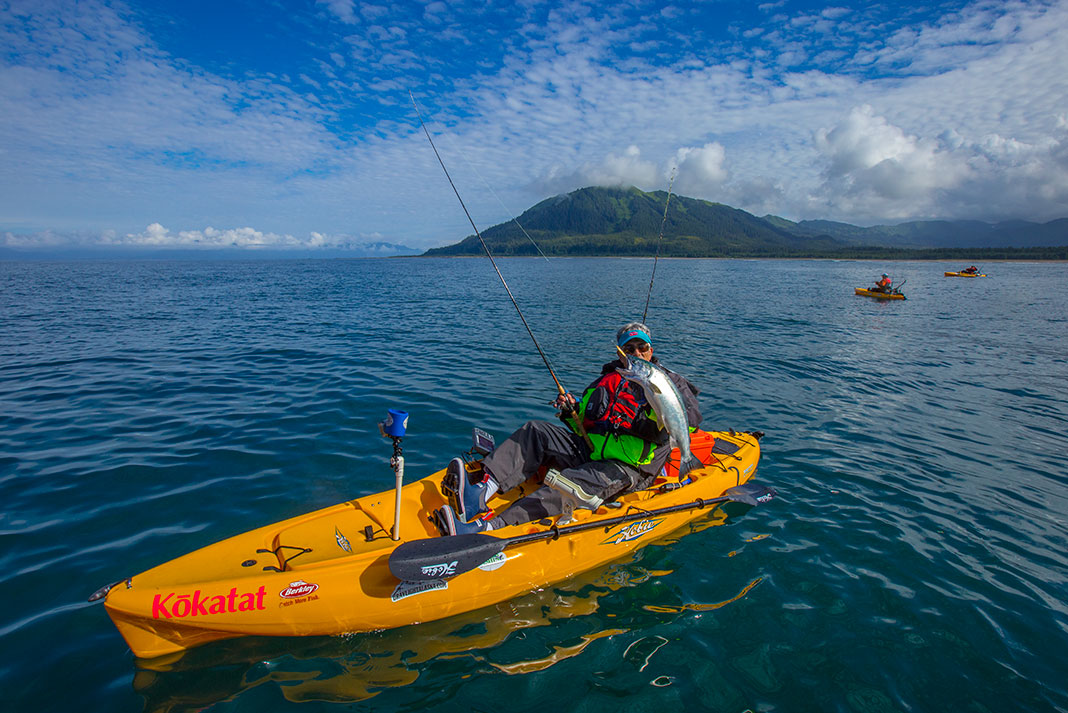Products You May Like
Coho salmon are one the most widely targeted species of Pacific salmon. Coho are also known as silver salmon; in addition to their silver color, they have small black spots on their backs, upper sides and upper tails. The biggest tell is the coho’s white mouth.
An average coho weighs 10 to 12 pounds. They grow larger in the fall before moving into rivers to spawn. Coho are native to the North Pacific from Asia to North America, but the fish have been introduced to the Great Lakes where they thrive. This article will focus on coastal coho.
How Coho Hunt
Coho are active predators hunting in large, loose schools. Along the coast, coho patrol anywhere in the water column from the surface to the ocean bottom. The salmon stalk kelp beds and steep, rocky headlands in search of herring or sand lance. Farther offshore, in deep water, coho swarm along tidal rips.

Catching Coho
For bait, it’s hard to beat fresh herring. Cut off the herring’s head and pin the body on two single hooks so the bait spins as it moves through the water. Connect the hooks to a 10-foot, 15-pound test monofilament leader attached to a two- to eight-ounce trolling sinker. Use a fish finder to search for schools of salmon. Then, slow troll the bait at the depth the fish are holding. Another technique is casting or vertical jigging a 1/2- to 1 1/2-ounce metal jig.
When I hook a coho, I’m in for a great fight. Coho are the wild child of the salmon family; they make sizzling runs, sharp turns and they even leap out of the water.
IGFA All-Tackle Record
33 lb 4 oz
Jerry Lifton
Salmon River, Pulaski,
New York, 1989
Top Spots
Coho can turn up anywhere along the Pacific coast from Central California to Northern Alaska. The best action is from May through September. Regularly check regulations since fisheries managers can open and close the season at a moment’s notice.
Expert Advice
Use a high-speed baitcasting or spinning reel to keep up with the charging fish. Given the coho’s unpredictable and sudden runs, a slower retrieve will produce a belly of slack line that can cost you the fish. Go with light fishing line. I favor 15-pound test braided line for sensitivity and reduced water resistance.
Cut bait or artificial lures, it’s your choice for Pacific salmon. | Feature photo: Adrian Gray

